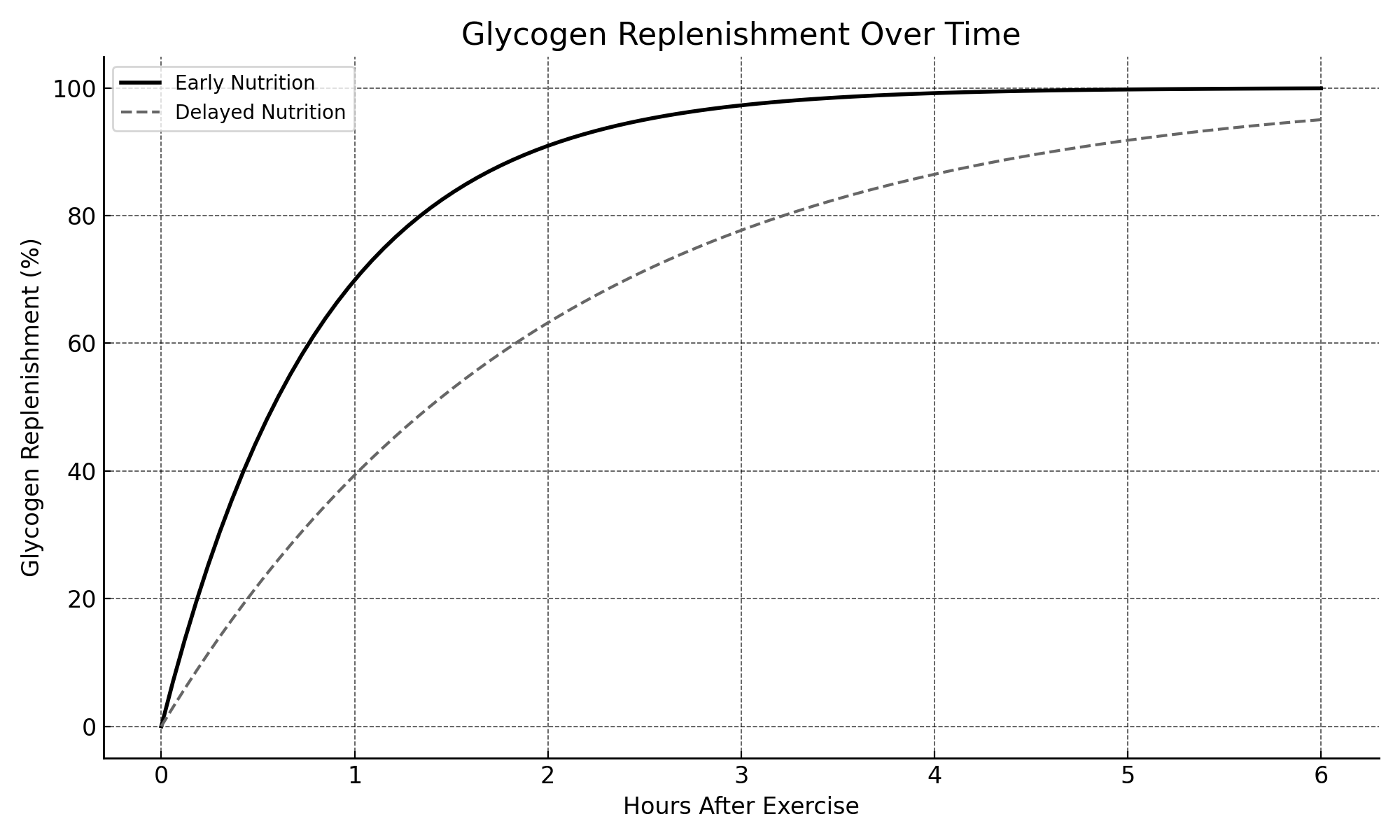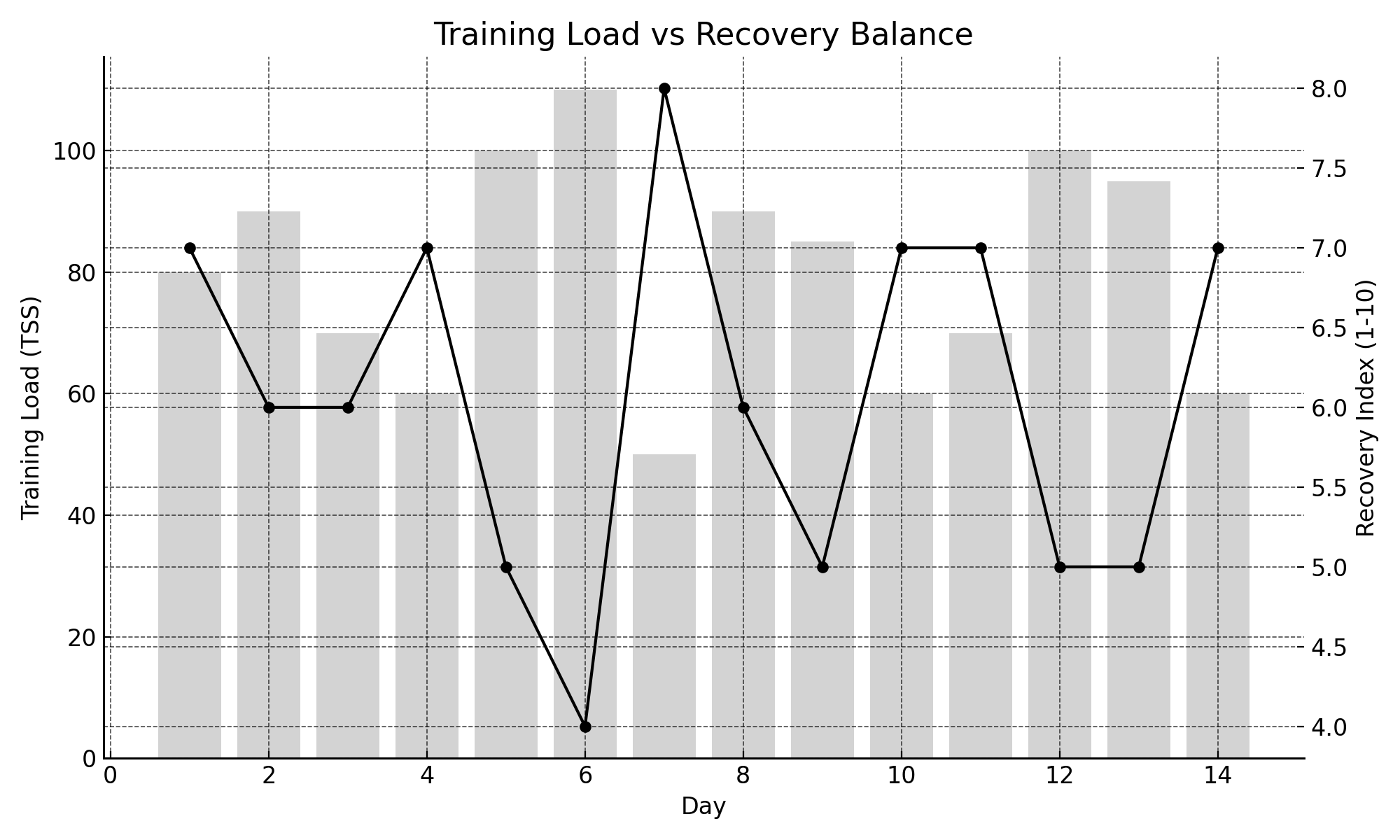Why Fast Recovery Matters in Cycling and How to Master It
Raceline Coaching | Cycling Coaching UK
Whether you're a seasoned racer or a dedicated amateur cyclist, one thing remains the same: you don’t get faster by training alone, you get faster by recovering well.
At Raceline Coaching, we help cyclists across the UK train smarter, not just harder. And one of the smartest ways to unlock performance gains is to master the art and science of fast recovery.
In this blog, we’re going deep into:
Why fast recovery is a game-changer for cyclists
How to recover after training and racing
The critical role of nutrition in recovery
Real-world strategies to bounce back stronger
How recovery fits into your cycling coaching plan
Graphs and visuals to help you plan smarter
Why Fast Recovery Matters in Cycling
Recovery isn’t a luxury, it’s a performance tool. The faster and more completely you recover, the better you’ll be able to perform in your next session, race, or training block.
Here’s what fast recovery gives you:
Increased training consistency
Improved adaptation to workload
Lower injury and illness risk
Better mood and motivation
Faster long-term performance gains
📈 Graph 1: The Training-Recovery Curve
Imagine a simple line graph showing performance over time.
X-axis: Time (days)
Y-axis: Performance level
Line A: Athlete who trains hard without enough recovery – sees frequent dips and plateaus.
Line B: Athlete who trains with planned recovery – sees steady improvement over time.
This graph highlights the “supercompensation” model: recovery allows your body to adapt beyond its previous state. Skip that recovery, and you’re stuck playing catch-up or worse, digging into fatigue.
What Happens to Your Body During Recovery?
When you finish a hard session, you’re not immediately fitter. You’re actually in a state of fatigue, micro-damage, and energy depletion. Recovery is the process your body goes through to rebuild:
Glycogen replenishment – refilling carbohydrate stores in muscles
Muscle repair – fixing micro-tears in muscle fibres
Hormonal regulation – balancing cortisol, testosterone, and growth hormone
Immune support – reducing inflammation and restoring white blood cell function
Neurological reset – helping the central nervous system recover
If these systems don’t recover, your next ride won’t be as good. And if you repeatedly shortchange recovery, you can drift into overreaching or even overtraining syndrome.
Recovery After Training vs Racing
After Training Sessions
Recovery requirements depend on the session’s intensity and duration. Here’s a rough breakdown:
Zone 2 / Endurance | Rehydration + light nutrition | 12–24 hrs
Sweet Spot / Tempo | Carbohydrate intake + protein | 24–36 hrs
VO2 Max / Sprints | Full glycogen recovery, sleep | 36–48 hrs
Strength Training | Muscle repair, protein intake | 48–72 hrs
After Races
Races are a different beast—more adrenaline, more fatigue, and often harder to recover from.
Post-race recovery tips:
Don’t skip your cooldown – 10–15 minutes of easy pedalling flushes out lactate.
Refuel immediately – use the 30-minute glycogen window post-race.
Sleep early that night – it’s your best recovery weapon.
Hydrate aggressively – especially after hot or humid races.
Prioritise protein – repair the deep tissue breakdown.
The Role of Nutrition in Cycling Recovery
Nutrition is not optional—it’s the recovery accelerator. Here's how to optimise your diet to boost your recovery rate:
🍌 1. Rebuild Glycogen Fast
After a ride, your muscle glycogen stores are partially or fully depleted. To replenish them:
Consume 1–1.2g carbs per kg of body weight within 30 minutes post-ride
Follow up with a balanced meal 2–3 hours later
Ideal choices: rice, pasta, sweet potato, bananas, oats
🥩 2. Repair Muscle Damage with Protein
Training breaks down muscle fibres. You need amino acids to rebuild stronger:
Aim for 20–30g of protein in the recovery window
Choose high-quality sources: whey protein, chicken, eggs, tofu, Greek yoghurt
💧 3. Rehydrate Effectively
You lose water and electrolytes through sweat. Don’t just drink water replace sodium and potassium too:
Use electrolyte drinks or hydration tablets
Monitor urine colour: pale yellow = hydrated
Bonus tip: Add salt to your recovery meal if it was a hot day
📉 Graph 2: Glycogen Replenishment Rate
This line graph shows how glycogen replenishes over time, depending on when carbs are consumed:
X-axis: Time after exercise (0–6 hours)
Y-axis: % of glycogen replenished
Line A (early nutrition): Rapid replenishment curve
Line B (delayed nutrition): Slower, flatter curve
Conclusion: Eat sooner, recover faster.
What Else Affects Recovery?
💤 Sleep
Sleep is where the real magic happens. During deep sleep, your body releases growth hormone, essential for muscle repair and immune function.
Aim for 7.5–9 hours per night
Use sleep hygiene strategies: no screens an hour before bed, dark room, cool temperature
Mobility and Active Recovery
Light activity the day after hard efforts helps blood flow and muscle repair:
Zone 1 rides (spins)
Yoga or stretching
Foam rolling or massage
❄️ Recovery Tools: Do They Work?
Some recovery tools help—but only if the basics are covered first.
Massage GunsImproves circulation, reduces soreness ✅
How Raceline Coaching Builds Recovery Into Your Plan
At Raceline Coaching, we don’t just prescribe workouts—we plan your entire training and recovery strategy to help you hit your peak form, then back it up week after week.
We tailor your recovery based on:
Your goals and event calendar
Your current fatigue and stress levels
Nutrition feedback
Sleep and HRV data (if available)
Power and heart rate analysis
Every coaching plan is designed around adaptation, not just exertion.
Overreaching is shown when blue bars are consistently high and the green line trends down. Proper recovery maintains a stable or rising green line, even as load increases over time.
Top 10 Tips to Recover Like a Pro
Prioritise sleep over late-night Zwift races
Fuel hard rides with carbs before, during, and after
Plan at least one rest day per week
Use protein post-ride, even for endurance work
Hydrate with electrolytes after hot rides
Don’t fear short recovery rides—they work
Listen to your body, not just your power meter
Use stretching and mobility daily
Track morning HR and RPE to spot fatigue early
Work with a coach who understands recovery science (like us 😉)
Final Thoughts: Fast Recovery = Faster Cycling
Recovery is your secret weapon. It’s not about taking days off—it's about rebuilding smarter so you can hit the pedals harder next time.
If you're serious about becoming a better cyclist, your recovery strategy is just as important as your training plan. And if you want expert guidance on how to recover, train, and perform like a pro—Raceline Coaching is here to help.
Work With Us
Whether you're prepping for your first 100-mile sportive or chasing podiums in the UK road racing scene, we’ve got your back.
👉 Limited coaching spaces available
👉 Personalised plans, data analysis, unlimited communication
👉 Tailored for your goals, lifestyle, and racing calendar
📞 Book your free consultation now at www.racelinecoaching.co.uk
Or email us: info@racelinecoaching.co.uk








